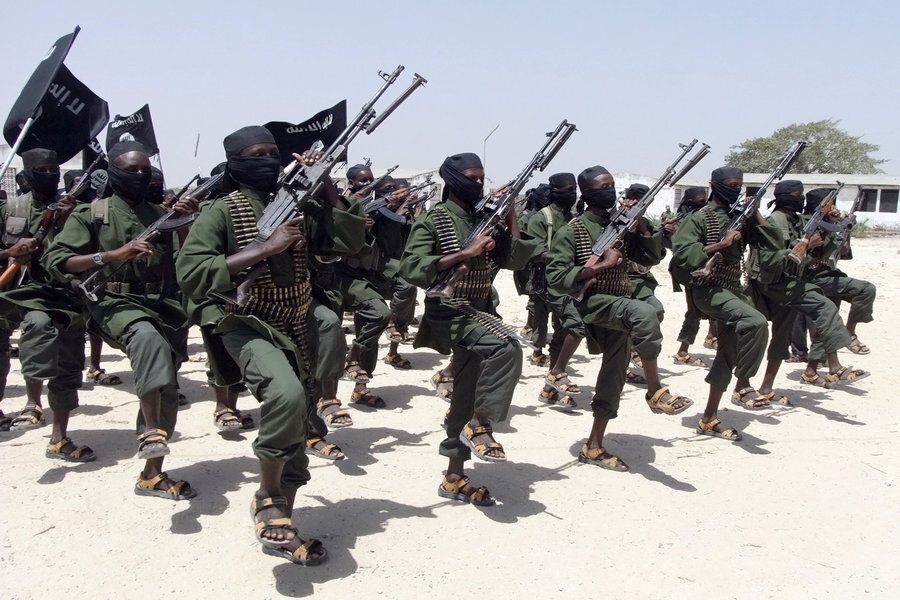Al Shabab intelligence chief reportedly target of US airstrike in Somalia
Loading...
| Washington
The United States carried out an airstrike in Somalia against the militant group Al Shabab, the Pentagon confirmed Monday.
It appears that the Al Qaeda-affiliated group’s intelligence chief, Abdishakur Tahlili, was the target of the attack. If confirmed, his death would be the latest in a series of setbacks the US military has dealt the terrorist organization.
For their part, defense officials say that they have seen these reports, but are not in a position to confirm the results of the airstrike – only that the target of the attack was a senior Al Shabab leader in Somalia.
“We are assessing the results of the operation and will provide additional information, when appropriate, as details become available,” Rear Adm. John Kirby, Pentagon press secretary, said in a statement.
Given the stepped-up US military offensive against Al Shabab, how big a threat does the group pose?
Al Shabab is perhaps best known in the US as the group responsible for carrying out the widely publicized attack on the Westgate mall in Nairobi, Kenya, which resulted in the death of more than 60 people in September 2013.
On the heels of that attack, Director of National Intelligence (DNI) James Clapper said last January, “Security has increased and ongoing counterterrorism and policing partnership have strengthened” between the US and Africa.
“Nevertheless,” he added in his 2014 Worldwide Threat Assessment, “East African governments will have difficulty protecting the wide range of potential targets.”
The report noted that “Al Shabab-associated networks might be planning additional attacks in Kenya and throughout East Africa, including Burundi, Djibouti, Ethiopia, and Uganda to punish those countries that deployed troops to Somalia in support of its government.”
Indeed, Kenya has been dealing with a spate of attacks in 2014 credited to Al Shabab.
The Pentagon uses Dijbouti as a military base of operations, and Mr. Clapper noted – in a report released before the Westgate Mall attacks – Al Shabab’s interest in “targeting US and Western interests in East Africa.”
And so, though Al Shabab has been largely parochial in its aspirations and attacks, the US military has gone on the offensive.
“Washington fears the group,” notes a recent Council on Foreign Relations (CFR) report, particularly because it “has successfully recruited members of the Somali-American diaspora” in order to “orchestrate strikes on US soil.”
The US strategy has included providing funding, training and logistical support to United Nations-backed forces battling Al Shabab, while, at the same time “escalating counterterrorism operations including Special Forces and armed drones,” according to CFR.
The tempo of US military operations appears to be taking a toll on the leadership of the terrorist group. This past September, a US airstrike killed Al Shabab leader Ahmed Abdi Godane.
Last week, a senior Al Shabab commander, Zakariya Ismail Ahmed Hersi – who has had a $3 million State Department bounty on his head since 2012 – surrendered to the Somali authorities and the African Union Mission in Somalia. He is now in custody, Somali officials said.
The most recent Pentagon strike has appeared to have killed Abdishakur Tahlili, along with two other senior Al Shabab officials. The strike occurred about 200 miles west of the capital of Mogadishu.
Somalia’s National Intelligence and Security Agency (NISA) said the strike was conducted as part of a joint operation with the United States, Bloomberg reports.







